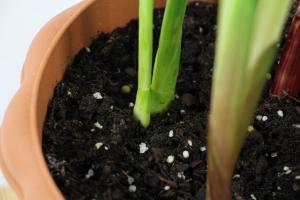How to Get Rid of Mold on Tomato Plants
Mold on tomato plants can be a common problem for gardeners, especially in humid or damp conditions. It can cause a range of issues including plant damage, reduced yield, and even disease. Here are some tips on how to effectively get rid of mold on your tomato plants:
Identify the Type of Mold
The first step in getting rid of mold on tomato plants is to correctly identify what type of mold you are dealing with. There are many different types of molds that can grow on tomato plants, including powdery mildew, downy mildew, gray mold, and early blight. Each type of mold requires a different approach to control and manage it.
Cultural Control Measures
One of the best ways to prevent and control mold on tomato plants is to maintain healthy growing conditions. This can be achieved by providing the plants with adequate sunlight, sufficient watering, and good air circulation. Additionally, avoid overhead watering as it can promote the growth and spread of mold spores. It's also important to properly space out your tomato plants to avoid overcrowding, which can lead to increased moisture and mold growth.
Natural Treatments
There are several natural treatments that can be effective in getting rid of mold on tomato plants. One option is to mix 1 tablespoon of baking soda with 1 quart of water and spray it on the affected leaves. This will help neutralize the acidic conditions that mold thrives in. Another option is to make a solution of 1 teaspoon of neem oil, 1 teaspoon of soap, and 1 quart of water and spray it on the plants. Neem oil is a natural fungicide that can help kill mold spores.
Fungicides
If natural treatments are not effective, chemical fungicides may be necessary to control mold on tomato plants. It's important to choose a fungicide that is labeled for use on tomatoes and that is safe for use on edible crops. Follow the instructions carefully and use the fungicide as directed.
Pruning and Removal of Affected Leaves
In addition to using cultural control measures and treatments, it's important to prune and remove affected leaves from your tomato plants. This will help prevent the spread of mold spores and ensure that the remaining healthy leaves can continue photosynthesis and produce a good yield.
Conclusion
Mold on tomato plants can be a frustrating problem for gardeners, but it can be effectively managed with the right approach. By identifying the type of mold, using cultural control measures and natural treatments, using fungicides, and pruning and removing affected leaves, you can keep your tomato plants healthy and mold-free.

 how many times do yo...
how many times do yo... how many planted tre...
how many planted tre... how many pine trees ...
how many pine trees ... how many pecan trees...
how many pecan trees... how many plants comp...
how many plants comp... how many plants can ...
how many plants can ... how many plants and ...
how many plants and ... how many pepper plan...
how many pepper plan...
































